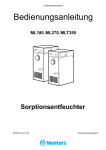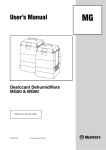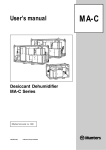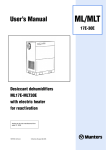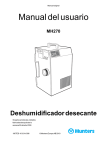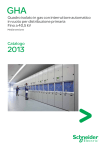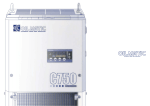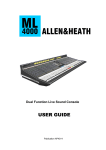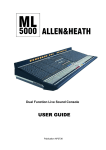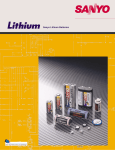Download Munters ARG 100 User`s manual
Transcript
User’s Manual ML/MLT 180-350 Desiccant Dehumidifier ML180-MLT350 Effective for units manufactured from week 46, 2002 190TGB-1034 © Munters Europe AB 2002 ML180-MLT350 Dehumidifiers Contents Important user information .............................4 5 Fault Finding 5.1 5.2 5.3 5.4 1 Introduction 1.1 1.2 1.3 1.4 1.5 1.6 General ..........................................................5 About this manual ..........................................5 Safety and Cautions ......................................5 Markings ........................................................6 Operator stations ...........................................6 Fault indications .............................................6 6 Product Design Information 6.1 6.2 6.3 6.4 6.5 6.6 2 Installation 2.1 2.2 2.3 2.4 2.5 2.6 2.7 2.8 General ..........................................................7 Safety.............................................................7 Moving the Equipment ...................................8 Packaging and Delivery Inspection................8 Storing the Equipment ...................................8 Location Requirements ..................................9 Process and Dry Air Connections ..................9 Ducting.........................................................10 2.8.1 General recommendations ...............10 2.8.2 Ductwork for Outdoor Air Inlet .......... 11 2.8.3 Ductwork for Wet Air Outlet .............. 11 2.9 Precaution for unit using LI desiccant rotor .12 2.10Installation Examples...................................13 2.10.1 Closed System .................................13 2.10.2 Open System....................................13 2.11 Electrical Connections .................................14 2.11.1 Mains Supply ....................................14 2.12External Humidistat......................................14 2.12.1 Location Requirements.....................14 2.12.2 Electrical Specifications....................14 2.13Pre-Start settings .........................................15 2.13.1 One-step humidistat .........................15 2.14Pre-Start Checks .........................................15 2.15Airflow Check and Adjustment.....................16 2.15.1 General.............................................16 General ........................................................23 Safety...........................................................23 Exchangeability............................................23 Fault localization ..........................................23 Product Description......................................25 Principal of operation ...................................25 Dimensions and service space ....................26 Capacity Diagrams.......................................27 Technical Specifications...............................28 Unit’s main components...............................29 7 Appendix 1- Options 7.1 7.2 7.3 7.4 General ........................................................30 Configuration alternatives ............................30 Running Time meter ....................................30 RH98............................................................30 7.4.1 General .............................................30 7.4.2 Display / change setpoint of relative humidity ............................................31 7.4.3 Display / change of other parameters .......................................31 7.4.4 Process related alarms .....................32 3 Operation 3.1 3.2 3.3 3.4 3.5 General ........................................................18 Safety...........................................................18 Emergency stop...........................................18 Pre-Start Checks .........................................18 Operating the unit ........................................18 3.5.1 Manual Mode....................................18 3.5.2 Automatic Mode - Humidistat ...........19 3.5.3 Automatic Mode - RH98 ...................19 3.6 Control Panel ...............................................20 4 Maintenance 4.1 General ........................................................21 4.2 Safety...........................................................21 4.3 Maintenance Schedule ................................21 190TGB-1034-A02.10 Contents 3 ML180-MLT350 Dehumidifiers Important user information Intended use of equipment Safety Munters dehumidifiers are intended to be used for the dehumidification of air. All other uses of the equipment, or use which is contrary to the instructions given in this manual, can cause personal injury and/or machine damage. In this publication hazardous activities are indicated and preceded by the common hazard symbol. WARNING! is used in this publication to indicate a possible danger that could lead to personal injury. An instruction is normally given, followed by a short explanation plus the possible effect if the instruction is not followed. Warranty and obligations The warranty period is 12 months from the date the equipment left our factory unless otherwise advised in writing. The warranty is limited to a free exchange complete with free freight, of faulty units or components which have failed as a result of faulty quality or defects in manufacture. Munters guarantees that the delivered unit has undergone rigid testing to ensure that the specifications stated here are fulfilled. All claims on warranty must verify that the fault has occurred within the guarantee period, plus that the unit has been used within its operating range as stated in the specification. All claims must include the unit type and manufacturing number. This data is to be found stamped on the unit identification plate, see Section Markings for location. CAUTION! is used in this publication to indicate a possible danger that could lead to damage to the machine or other equipment and/or cause environmental damage. An instruction is normally given, followed by a short explanation plus the possible environmental effect if the instruction is not followed. NOTE! Used to accentuate supplementary information that is required for problemfree use or optimal use of the unit. Note The contents of this publication can be changed without prior notice. This publication contains information which is protected by copyright laws. No part of this publication may be reproduced, stored in a system for information retrieval or be transmitted in any form, in any manner without Munters’ written consent. Please send any comments regarding the content of this publication to: Conformity with directives and standards Munters dehumidifiers are designed and manufactured by an EN-ISO 9001 accredited development and manufacturing organization. The unit conforms with the specifications in the Machinery Directive 98/37/EEC, the Low Voltage Directive 73/23/EEC as amended by Directive 93/68/EEC and the EMC Directive 89/336/EEC as amended by Directives 92/31/EEC and 93/68/EEC. The standards applied are listed in the EC Declaration of Conformity. Munters Europe AB Dehumidification Division Technical Publications PO Box 434 SE-191 24 Sollentuna Sweden Tel.: +46 (8) 626 63 00 Fax: +46 (8) 626 86 18 © Munters Europe AB 2002 4 Important user information 190TGB-1034-A ML180-MLT350 Dehumidifiers 1 Introduction 1.1 General Munters dehumidifiers are designed to efficiently dehumidify air. Munters has a wide range of dehumidifiers that have design parameters applicable for different usages and applications. Please contact your nearest Munters office if you have any doubt or questions regarding the actual installation. For product data information, see chapter 6, Product Design Information. 1.2 About this manual This manual is written for the user of the dehumidifier and describes the installation, operation, maintenance and basic fault finding. The information structure of the manual is built on numbered chapters and sections. Contents (page 3) gives a quick overview. The different chapters can be used separately to serve their purpose. Figures and tables are numbered in accordance with the actual chapter, e.g. figure 1-3 is picture number 3 and is found in chapter 1. The goal of the manual is to provide the necessary information for the user to understand the unit’s construction and function, and as to serve as a guide during installation, operation, maintenance and basic fault finding that generally can be carried out before contacting Munters Product Service. 1.3 Safety and Cautions The contents of this manual include suggested best working practices and procedures. These are issued for guidance only, they do not take precedence over the individual responsibility and/or local safety regulations. During installation and operation of this equipment it is always each individual person’s responsibility to consider: • Their own and others’ personal safety. • The safety of the unit through correct us of the equipment in accordance with the descriptions and instructions given in this manual. Every care has been taken in the design and manufacture of the MLSeries dehumidifiers to ensure that they meet the safety requirements of the directives and standards listed in the EC Declaration of Conformity. It is recommended to be informed about the use of safety symbols in this manual by reading the opposite page Important user information. The relevant safety information for this manual will be found listed early in each manual chapter. 190TGB-1034-A 1 Introduction 5 ML180-MLT350 Dehumidifiers 1.4 Markings 1 2 3 5 6 4 6 (GB)CHANGE FILTER (GB)CHANGE FILTER Figure 1-1. Location of labels 1 3 2 Type ML420 Fabr. No 0214 190XXX XXXXX 3 ~ 400V 50Hz M Max 370W 42.kW 4,57kW IP44 5 4 6 Munters Europe AB 1 = Identification Plate 3 = Wet Air Outlet 5 = React Air Inlet 2 = Dry Air Outlet 4 = Process Air Inlet 6 = ML180-MLT350 Filter (GB) CHANGE FILTER (SW) BYT FILTER (FR) REMPLACER LE FILTER (DE) FILTER AUSWECHSELN Figure 1-2. Example of identification plate content & Label details 1.5 Operator stations The dehumidifier is controlled and supervised with the help of the control panel, located on the front of the unit, see figure 3-1. 1.6 Fault indications Faults are clearly indicated through an illuminated indicator on the control panel, see figure 3-1. Alarms related to air relative humidity are indicated in the display of the RH98 (if fitted) operators panel, see section 7.4, RH98. 6 1 Introduction 190TGB-1034-A ML180-MLT350 Dehumidifiers 2 Installation 2.1 General The ML Dehumidifiers intended for indoor installation. The unit is inspected and checked prior to leaving the factory to guarantee consistent quality and maximum reliability. If the unit is to be put into storage, prior to installation, see section 2.5, Storing the Equipment. 2.2 Safety WARNING! The dehumidifier is heavy and can weigh in excess of 50kg. To avoid accidents use only approved lifting equipment. WARNING! All electrical equipment connections must be carried out in accordance with local regulations and by qualified personnel. WARNING! The unit must never be connected to a voltage or frequency other than that for which is was designed and manufactured. Refer to the unit identification plate if in doubt. WARNING! Ensure that the mains power is isolated from the dehumidifier prior to changing the orientation of the process and dry air connections. CAUTION! The wet air ducting must always be insulated if there is a risk of freezing. Due to the high moisture content in the wet air leaving the dehumidifier condensation will readily form on the inside duct walls. CAUTION! The dehumidifier has been designed to operate at specific process airflows (corresponding to the fan sizes installed) and must not be directly connected to air-conditioning systems. CAUTION! Failure to correctly adjust the process and reactivation airflows could cause the unit to malfunction. CAUTION! When moving the dehumidifier always consider the possible risk of the unit tipping over. 190TGB-1034-A 2 Installation 7 ML180-MLT350 Dehumidifiers 2.3 Moving the Equipment WARNING! The dehumidifier is heavy and can weigh in excess of 50kg. To avoid accidents use only approved lifting equipment. The dehumidifier is delivered on a pallet and must be handled carefully. All panel doors of the unit must be closed during transport. Provided that the dehumidifier is still secured to its delivery pallet, it can be moved using a fork-lift truck. CAUTION! When moving the dehumidifier always consider the possible risk of the unit tipping over. Figure 2-1. Example of moving the dehumidifier Weight of the dehumidifier can be found in section 6.3, Dimensions and service space. 2.4 Packaging and Delivery Inspection. 1. Check the delivery against the packing list, consignment note or other delivery documentation and check that everything is included and nothing is damaged. 2. Contact Munters immediately if delivery is not complete in order to avoid installation delays. 3. If the unit is to be put into storage, prior to installation, see section 2.5, Storing the Equipment. NOTE! If the installation is not to be carried out immediately after the arrival of the equipment it is advisable to leave the packing material in place on the dehumidifier, or to re-use the packaging material to provide temporary protection for the unit during later transport to the installation location and during installation. 4. Remove all packing material from the unit, check carefully to make sure that no damage has occurred during transport. 5. Any visible damage must be reported in writing to Munters prior to the start of installation. 2.5 Storing the Equipment The following is important if the dehumidifier is to be stored prior to installation: • Place the dehumidifier on a horizontal surface. • Protect the dehumidifier from physical damage. • Store the dehumidifier under cover and protect it from dust, frost, rain and aggressive contaminants. 8 2 Installation 190TGB-1034-A ML180-MLT350 Dehumidifiers 2.6 Location Requirements The dehumidifier is intended for indoor installation. It is important that the intended installation site meets the location and space requirements for the equipment in order to achieve the best possible performance and trouble-free operation. The unit should be placed in an upright level position inside or outside the space to be dehumidified. For unit and service dimensions, see section 6.3, Dimensions and service space. NOTE! It is important, both for maintenance and for service, that the minimum service space for service access are compiled with. 2.7 Process and Dry Air Connections The front and back panels are interchangeable, so that the connections for process and dry air may be situated either on the left or right side of the unit. ML-Series dehumidifiers are delivered with the process and dry air connections on the left side of the unit. If it is required to the change the orientation, so that the connections are on the right side of the unit, proceed as follows: WARNING! Ensure that mains power is isolated from the dehumidifier prior to changing the orientation of the process and dry air connections. 1. Remove the two bolts (B) securing the front panel and carefully remove the panel. 2. Remove the two bolts securing the rear panel and carefully remove the panel. 3. Remove the two bolts (A) and washers, securing the control and top panels to the unit and carefully remove the top panel. 4. Remove the cable duct covers (C), re-route the cables and fit the control panel (D) to the opposite side of the unit. Refit the cable duct covers. 5. Refit the front, rear and top panels in the new position. A C D B Figure 2-2. Changing panel orientation 190TGB-1034-A 2 Installation 9 ML180-MLT350 Dehumidifiers 2.8 Ducting 2.8.1 General recommendations The connections for process and reactivation air are designed in accordance with the recommendations in ISO 7807. The rectangular duct connections contain tapped inserts for M8 bolt fixings. CAUTION! The dehumidifier has been designed to operate at specific process airflows (corresponding to the fan sizes installed) and must not be directly connected to air-conditioning systems. • When installing ductwork between the dehumidifier and the inlet and outlet connections, the following recommendations should be observed: • The length of ductwork should be kept as short as possible to minimise static air pressure losses. • To maintain performance, all rigid process or reactivation air ductwork joints must be air and vapour tight. • The process air ductwork should be insulated to prevent condensation from developing on the outside of the duct whenever the temperature of the air within the duct falls below the dewpoint of the ambient air through which the ductwork is routed. • The ducting must always be insulated when there is a risk of freezing. • The wet air leaving the dehumidifier will, due to high moisture content, condense on the inside duct walls. This must be avoided by insulating the ducts. • Horizontal duct-runs should be installed sloping downwards (away from the dehumidifier) to allow for condensate drainage. On the wet air outlet ducting, suitable condensate drains should be installed at low points in the ductwork. Refer to figure 2-3, Wet air outlet design. • Ensure that access for operation and servicing is not restricted when designing and installing ducting. For details refer to section 6.3, Dimensions and service space. • To reduce noise and/or vibration being transmitted along rigid ductwork, good quality, airtight flexible connections can be fitted. • Ducts mounted directly onto the dehumidifier should be adequately supported to minimise the load and stress due to the duct weight and movement. • Dampers for balancing the airflows must be installed in the dry air outlet and reactivation air inlet ducts. The correct airflows are essential for maintaining the operating efficiency of the unit. For airflow adjustment details, see section 2.15, Airflow Check and Adjustment. 10 2 Installation 190TGB-1034-A ML180-MLT350 Dehumidifiers • The total resistance in the process and reactivation air ductwork must not exceed the performance rating of the fans fitted in the dehumidifier. For details of minimum available static pressure, see section 6.5, Technical Specifications. Vertical Wet Air Outlet Horizontal Wet Air Outlet Downward slope away from dehumidifier Wet Air Wet Air Wire netting, mesh width about 10 mm Wire netting, mesh width about 10 mm To Condensate Drain Figure 2-3. Wet air outlet design 2.8.2 Ductwork for Outdoor Air Inlet When bringing outside ambient air into the dehumidifier, the opening to the inlet duct should be sufficiently located above ground level to prevent the pick-up of dust and debris. The ducting should be designed to prevent rain and snow from being drawn into the dehumidifier. The air inlet must be located away from possible contaminations such as engine exhaust gases, steam and harmful vapours. To prevent the wet (outlet) air humidifying the reactivation (inlet) air, the air inlet for reactivation must be located at least 2m from the air outlet for wet air Refer to figure 2-4, Outdoor air inlet design. 2.8.3 Ductwork for Wet Air Outlet Wet air ducting should be manufactured in corrosion resistant material (e.g. stainless steel, aluminium or plastic) and should be capable of withstanding temperatures of up to 100°C. CAUTION! The wet air ducting must always be insulated if there is a risk of freezing. Due to the high moisture content in the wet air leaving the dehumidifier condensation will readily form on the inside duct walls. Horizontal duct-runs must therefore be installed sloping downwards (away from the dehumidifier) to allow for condensate drainage. The slope should be a minimum of 2cm per meter duct. In addition, 5mm drain hole should be drilled at the low points in the duct to prevent water accumulating in the duct. See figure 2-3, Wet air outlet design. 190TGB-1034-A 2 Installation 11 ML180-MLT350 Dehumidifiers Rectangular Duct Wire netting, mesh width about 10mm Round Duct Wire netting, mesh width about 10mm Figure 2-4. Outdoor air inlet design 5 B 1 C 4 5 A = = = = Process air inlet Dry air outlet Reactivation air inlet Wet air outlet 1 2 3 4 5 = = = = = Dry air damper External filter box (option) Duct transition Reactivation air damper Outlet duct (wire netting) 420 2 A B C D ML Munters D 3 Figure 2-5. Required ductwork 2.9 Precaution for unit using LI desiccant rotor To prevent the lithium chloride (LI) desiccant rotor becoming overloaded when the dehumidifier has been switched off, air with a relative humidity exceeding 80% must not pass through the rotor! It is recommended to install motorized and air tight shut-off dampers in the inlet process and reactivation air openings to the dehumidifier. This is to prevent air with a very high relative humidity from inadvertently being drawn through the rotor by a chimney effect created by ancillary equipment. This is particularly important when the process air is drawn from outdoors, or the system has been fitted with a pre-cooler. Failure to observe these precautions could result in a serious loss of performance and may cause permanent damage to the rotor. 12 2 Installation 190TGB-1034-A ML180-MLT350 Dehumidifiers 2.10 Installation Examples The closed airflow system is mainly used where the room to be dehumidified contains little or no ventilation, and is partially sealed. 420 2.10.1 Closed System ML Munters 420 A closed airflow system offers the advantage of simple design and therefore low installation costs. Usually a closed system will minimise the size of the dehumidifier required, and because the environment is partially sealed, the operating costs for the dehumidifier will also be minimised. ML Munters Figure 2-6. Closed Airflow System 2.10.2 Open System Open airflow systems can be utilized in place of closed systems to overcome the following problem areas: Harmful gasses or vapours which must not be recirculated. 420 High level of dust or corrosive particles in the room. ML Munters Problems arranging air recirculation where several rooms are served by the same dehumidifier. Specially where recirculated air must not be mixed. A pressured environment is desired to prevent uncontrolled infiltration of humid air, particularly where low relative humidity is required. 420 When an open airflow system is installed, all leaks in the airflow much be controlled within an acceptable tolerance. ML Munters Figure 2-7. Open Airflow System 190TGB-1034-A 2 Installation 13 ML180-MLT350 Dehumidifiers 2.11 Electrical Connections 2.11.1 Mains Supply WARNING! All electrical equipment connections must be carried out in accordance with local regulations and by qualified personnel. WARNING! The unit must never be connected to a voltage or frequency other than that for which it was designed and manufactured. Refer to the unit identification plate if in doubt. ML180 & MLT350 dehumidifiers are supplied complete with a prewired mains cable. The cable is fitted with a multi-pin plug suitable for connection to a single phase earthed mains socket. The ML270 is designed for 3-phase AC operation. Each unit is supplied complete with all the internal wiring installed and configured in accordance with the specified voltage and frequency on the identification plate. ML270 (only): We strongly recommend that an external isolator be installed and placed close to the ML270 unit. The isolator can be used to switch of the power to the unit in case of an emergency. NOTE! Supply voltage must not vary more than 10% of the specified operating voltage. The unit must be adequately connected to earth. ML270 (only): The power supply cables must be of the correct size for the dehumidifier being installed. For connection details refer to the identification plate and Electrical Circuit Supplement or refer to section 6.5, Technical Specifications. 2.12 External Humidistat ML-Series dehumidifiers are pre-wired so that when the unit is in the AUTomatic mode it can be controlled by an externally mounted humidistat. ML180-MLT350 have been designed with a one-step heater, and therefore control is limited to switching the unit on and off using a onestep humidistat. A low voltage connector (mounted on the side of the unit) is provided for electrical connection of a single-stage humidistat. For details refer to the units Circuit Diagram Supplement. 2.12.1 Location Requirements The humidistat should be mounted 1-1.5m above the floor and positioned so that it is not exposed directly to dry air from the unit or incoming moist air from opening and closing doors. It may not be placed close to a heat source or so that it is exposed to direct sunlight. 2.12.2 Electrical Specifications The humidistat connecting cable should have a conductor crosssectional area of not less than 0,75 mm2 and must have an insulation resistance rating in excess of 500 VAC. 14 2 Installation 190TGB-1034-A ML180-MLT350 Dehumidifiers The humidistat must be electrically compatible with the dehumidifier’s extra low voltage control circuit. The humidistat must be designed so that the contacts close on a rising RH to complete the control circuit and start the dehumidifier. Voltage drops may be experienced when using excessively long cables. At operation, the voltage must be 24VAC measured at the dedicated terminals, used for connecting the humidistat to the dehumidifier. If the measured voltage is less than 20VAC, a separate relay controlled by the humdistat must be used. 2.13 Pre-Start settings ML180-MLT350 units are equipped with a number of standard features requiring a few selections and settings before the unit is put in operation for the first time. Some features require connection of external equipment. For wiring details refer to the Circuit Diagram Supplement supplied with this unit. 2.13.1 One-step humidistat NOTE! Where no humidistat is connected to the unit, the dehumidifier will be operating at maximum output for as long as the unit is switched on. Where a one-step humidistat is fitted, the dehumidifier will switch on and off under the control of the humidistat. The one-step humidistat is connected in accordance with the Circuit Diagram Supplement. 2.14 Pre-Start Checks Before starting the dehumidifier for the first time, ensure that the mains power supply is isolated from the dehumidifier and carry-out the following checks: 1. Check that the Mode switch on the dehumidifier is in the “OFF” position, see figure 3-1, Control Panel. 2. Check the air intake filters for damage and proper fixation and also check that all areas inside the unit are clean. 3. Visually inspect all ducting and duct connections to make sure that all connections have been correctly installed and that there are no signs of damage to the system. Also check that all ducts are free from obstacles blocking the air passage. 4. Remove the top panel and check that none of the main contact breakers in the electrical control panel have been tripped. For details refer to the wiring diagrams provided with the unit. 5. Check that the incoming power supply voltage is correct and that the cables are correctly connected. 6. If a humidistat has been installed, check that it has been correctly positioned in the room and has been correctly connected to the unit, see section 2.12, External Humidistat. 190TGB-1034-A 2 Installation 15 ML180-MLT350 Dehumidifiers 7. The ML270 has a 3 phase fan motor and the rotation direction of the fan impeller must be checked after connection to the power supply. Open the front panel of the dehumidifier and take out the process filter. Start the dehumidifier and check that the fan impeller is rotating. Stop the dehumidifier and observe the impeller just before it stops rotating to check that the rotation direction is clockwise. 8. If a RH98 has been installed, check that the sensor has been correctly positioned in the room and has been correctly connected to the unit, see appendix 7.4, RH98. 9. Set the process and reactivation airflow dampers to the fully open position. 2.15 Airflow Check and Adjustment 2.15.1 General To obtain the design performance, the dry air and reactivation airflow dampers must be correctly adjusted in accordance with the rated airflow, see section 6.5, Technical Specifications. If required contact Munters Product Service to receive help with commissioning the dehumidifier installation, see addresses on the back cover of this manual for your local Munters representative. CAUTION! Failure to correctly adjust the process and reactivation airflows could cause the unit to malfunction. 1. Using the dampers installed in the dry air outlet and reactivation air inlet ducts, adjust the process and reactivation airflows to the correct rated airflow. 2. Start the dehumidifier and let it run on full power for approximately 5 minutes to allow the reactivation heater to reach its normal operating temperature. Refer to Chapter 3, Operation. 3. Check that the temperature differential between the reactivation supply air and the reactivation air (indicated on the temperature display) is 95°C (tolerance ±5°C). 16 2 Installation 190TGB-1034-A ML180-MLT350 Dehumidifiers 4. If the temperature differential is out of tolerance limit by 5%, adjust the reactivation air damper in small stages allowing the temperature display to stabilise after each adjustment) until reactivation temperature reading is within the specified tolerances. . tu˚C 140 Symbols: (°C) ti = Inlet air temperature tu = Reactivation air temperature (°C) Example: Inlet air temperature (ti) = Reactivation air temperature = Temperature increase = 120 100 15°C 110°C 95°C 80 60 -40 -20 0 20 40 60 ti˚C Figure 2-8. Airflow Chart 190TGB-1034-A 2 Installation 17 ML180-MLT350 Dehumidifiers 3 Operation 3.1 General The ML180-MLT350 dehumidifiers are equipped with a control panel that contains mode switches and LED indicators. The mode switch of the control panel has two operating modes: MAN (Manual mode) The dehumidifiers fan, rotor and reactivation heater operate continuously with full capacity. AUT (Automatic mode) The dehumidifiers fan, rotor and reactivation heater operate when the Relative Humidity rises above the desired value. 3.2 Safety CAUTION! To prevent damage to the fans, the unit must not be run for longer than a few minutes prior to setting-up the process and reactivation airflows. CAUTION! Failure to correctly adjust the process and reactivations airflows could cause the unit to malfunction. 3.3 Emergency stop ML180 & MLT350 To start and stop the unit in normal operation the Run/Stop switch is used. In case of an emergency unplug the unit from the wall outlet. ML270 To start and stop the unit in normal operation the Run/Stop switch is used. In case of an emergency switch the unit off using the external isolator (if fitted). 3.4 Pre-Start Checks Before starting the dehumidifier for the first time, carry out checks according to section 2.14, Pre-Start Checks and section 2.15, Airflow Check and Adjustment. 3.5 Operating the unit 3.5.1 Manual Mode 1. Ensure the Run/Stop switch is set to the position. 2. Operate the mode switch to the MAN position. 3. Connect mains power to the unit and ensure that the power connected indicator is illuminated. 4. Operate the run/stop switch to the position. Ensure that the unit running indicator is lit and the unit is operating. 18 3 Operation 190TGB-1034-A ML180-MLT350 Dehumidifiers 5. Operate the run/stop switch to the position and check that the unit stops and that the unit running indicator goes out. For details on the Control panel, see figure 3-1, Control Panel. 3.5.2 Automatic Mode - Humidistat For the unit to operate in the AUTOmatic mode a one-step humidistat must be installed and correctly connected to the unit. For details see section 2.12, External Humidistat. 1. Set the mode switch to the AUTO position. 2. Adjust the humidistat set point for the minimum relative humidity (RH) value. Operate the run/stop switch to the position. Ensure that the unit running indicator is lit and the unit is operating. 3. Slowly increase the humidistat set-point and check that the unit switches off when the set-point matches the RH in the room where the humidistat is installed. Check that the unit running indicator remains on. 4. Slowly decrease the humidistat set-point and check that the unit switches on when the set-point falls below the RH in the room where the humidistat is installed. 5. Operate the run/stop switch to the position and check that the unit stops and that the unit running indicator goes out. 6. Reset the humidistat to the desired set-point. For details on the Control panel, see figure 3-1, Control Panel. 3.5.3 Automatic Mode - RH98 If the unit has been supplied with a factory fitted RH98 control system (option) the external transmitter must be installed and correctly connected to the unit. The same location requirements are valid for the humidistat and the RH98, see section 2.12, External Humidistat. For details on operation see section 7.4, RH98. 1. Set the mode switch to the AUTO position. 2. Adjust the RH98 set point for the minimum relative humidity (RH) value. Operate the run/stop switch to the position. Ensure that the unit running indicator is lit and the unit is operating. 3. Slowly increase the RH98 set-point and check that the unit switches off when the set-point matches the RH in the room where the humidity transmitter is installed. Check that the unit running indicator remains on. 4. Slowly decrease the RH98 set-point and check that the unit switches on when the set-point falls below the RH in the room where the humidity transmitter is installed. 190TGB-1034-A 3 Operation 19 ML180-MLT350 Dehumidifiers 5. Operate the run/stop switch to the position and check that the unit stops and that the unit running indicator goes out. 6. Reset the RH98 to the desired set-point. For details on the Control panel, see figure 3-1, Control Panel. 3.6 Control Panel 1 2 3 4 5 6 Figure 3-1. Control Panel Item 1 Switch/Indicator Run/Stop Switch Function With the run/stop switch selected to the position, the unit is switched off. With the mode switch in the “MAN” position, operating the run/stop switch to the position will start the dehumidifier. 2 Mode Switch 3 4 Power Connected Indicator Unit Running Indicator 5 Fault Warning Indicator 6 7 Temperature Gauge Running time meter 1 1 Optional component With the mode switch in the “AUTO” position, operating the run/stop switch to the position will allow an external humidistat or RH98 to control the operation of the dehumidifier. With the mode switch in “MAN” position, the dehumidifier will operate in the manual mode. In this mode the unit will run continuously when the run/stop switch is operated to the position. With the switch in the “AUTO” position, the dehumidifier will operate in the automatic mode. In this mode a humidistat or RH98 must be connected to the unit. When the run/stop switch is operated to the position, the humidistat or RH98 determines when the dehumidifier will start and stop. Indicates that mains power is connected to the dehumidifier. Indicates that the dehumidifier is running, or is ready to start on a signal from the humidistat or RH98 (automatic mode). Indicates that the unit has shut-down due to the control circuit detecting that either the high temperature cut-out or the fan motor overload has tripped. For units fitted with an air cooled condenser, the fault warning indicator is activated when there is a condenser fan or heater fault. Indicates the Reactivation Air temperature. Indicates the number of hours that the dehumidifier has been operating. Table 3-1. Function of the Control Panel 20 3 Operation 190TGB-1034-A ML180-MLT350 Dehumidifiers 4 Maintenance 4.1 General Munters dehumidifiers are designed for long, continuous operation with minimum attention. Under normal operating conditions, requirements for maintenance are minimal. Maintenance interval lengths are primarily determined by operating conditions and the environment in which the unit is installed. When in doubt, consult Munters’ product service department. See addresses for Munters representatives on the back cover of this manual. 4.2 Safety WARNING! Adjustments, maintenance and repairs may only be carried out by qualified personnel who are aware of the risks involved during the maintenance of equipment containing high electrical voltage and high machine temperatures. 4.3 Maintenance Schedule The following maintenance schedule is recommended by Munters and covers procedures for inspection and maintenance as well as suggested time intervals for a unit that operates under normal operational and environmental conditions. If the process air has a high dust content, preventative scheduled maintenance should be performed at shorter intervals than what is specified. 190TGB-1034-A 4 Maintenance 21 ML180-MLT350 Dehumidifiers Inspection/Maintenance Procedure Component 3-6 Months 12 Months Process and reactivation filter Clean filter housing and change filter if dirty. Dehumidifier housing Check for physical damage and clean unit Check for physical damage and clean unit externally and internally as necessary. externally and internally as necessary. Process and reactivation fans Check for physical damage and clean the Remove all dirt and dust in the motor cooling fan motor housing as required. air intakes. Check the motor electrical connections and make sure they are properly tightened. Inspect for damage and overheating. Check the fan impellers for damage and clean if necessary. Drive motor assembly Check the drive belt tension and adjust if Check the drive motor electrical connections necessary. and make sure they are properly tightened. Inspect the drive motor for damage or overheating. Rotor and sealing Check for overheating and clogging. Check for overheating and clogging. Remove Remove dust accumulation on the frontal dust accumulation on the frontal area of the area of the rotor if necessary. rotor if necessary. Use a vacuum cleaner, not compressed air. Electrical panel and cables Clean filter housing and change filter. Check the seals for damage or wear. Check the seals for damage or wear. Inspect the components in the electrical panel for damage or overheating. Inspect the components in the electrical panel for damage or overheating. Check the seals at cable entries. Check that the electrical terminals are properly tightened. Remove dirt and dust around all components. Reactivation heater Check all cables, pipes etc. and control devices with respect to safety. Check electrical connections and make sure they are properly tightened. Ducting connections Check for air leakage and proper attachment to the unit. Check for air leakage and proper attachment to the unit. Check for dirt inside the ducting and for physical damage. Humidistat or humidity transmitter N/A Check sensor functions and calibrate or replace if necessary. Table 4-1. Maintenance plan 22 4 Maintenance 190TGB-1034-A ML180-MLT350 Dehumidifiers 5 Fault Finding 5.1 General The purpose of this chapter is to provide guidance in basic fault finding and provide instructions for corrective actions so as to remedy faults. Wiring diagrams can be provided to assist with fault isolation. 5.2 Safety WARNING! Adjustments, maintenance and repairs may only be carried out by qualified personnel who are aware of the risks involved during the maintenance of equipment containing high electrical voltage and high machine temperatures. 5.3 Exchangeability All electrical equipment in the electrical panel can be exchanged for new components as provided in the list of components, see Circuit Diagram Supplement. The changing of rotors and/or rotor drive mechanism must be carried out by Munters recommended and trained personnel. The changing of reactivation heater must be carried out by Munters recommended and trained personnel. Drive belts and fans can be changed for one of the same type. After a fan has been changed, the airflow must be adjusted and an operational test must be carried out. Switches and sensors can be changed to one of a corresponding type. After a change an operational test must be carried out. 5.4 Fault localization The LEDs alarm message shown on the control panel are the primary source of information for finding faults when the unit has given an alarm and stopped automatically. Go through the following fault localization list below before contacting Munters’ product service department. The list provides help in identifying types of faults that are easy to remedy without the assistance of specially trained personnel. If the unit is equipped with RH98 Humidity Control System, see section 7.4.4, Process related alarms. 190TGB-1034-A 5 Fault Finding 23 ML180-MLT350 Dehumidifiers Fault Indicators Symptom Unit has stopped Unit has stopped All off Possible cause Power supply failure Check power supply to the unit. Transformer TC18 fuse FU18 failure. Investigate the cause of the fault and rectify. Reset the fuse. No.3 & 4 are Unit switched to AUTOmatic mode by on mistake with no humidistat connected. Humidistat fault (AUTOmatic mode). Unit has stopped Action No.5 & 3 are High temperature cut-out (BT20) has on tripped. Set the mode switch to MANual mode and check that the dehumidifier starts. Set the mode switch to MANual mode and check that the unit starts. If the unit starts, the humidistat is probably at fault. Set the mode switch to AUTOmatic mode and check the humidistat by seeing if the dehumidifier starts when the humidistat set-point is reduced. Reset the humidistat set-point after the check. Calibrate the humidistat (in accordance with the manufacturer’s recommendations) if necessary or replace. Switch off the mains supply and allow the unit to cool down. Check that the air inlet, outlet ducts and filters are free from obstructions and are not clogged with dirt. Reset the cut-out when the unit has cooled down. Unit has stopped No.5, 3 & 4 are on Reactivation airflow is set too low. Reset the cut-out. ML180 & MLT350: Circuit Breaker QM12 tripped due to a drive motor, fan fault or reactivation heater fault. Restart the unit and adjust the reactivation airflow, see section 2.15, Airflow Check and Adjustment. Switch off the mains supply and allow the unit to cool down. Reset Circuit Breaker QM12 . Investigate the cause of the fault and rectify or call Munters Product Service. ML270: Circuit Breaker QM12 tripped due to a drive motor or fan motor fault. Circuit Breaker QM15 tripped due to a reactivation heater fault. Switch off the mains supply and allow the unit to cool down. Reset Circuit Breakers QM12 and QM15. Investigate the cause of the fault and rectify or call Munters Product Service. Air cooled condenser models: ML180 & MLT350: Circuit Breaker QM12 tripped due to a drive motor, fan fault, condenser fan fault or a condenser heater fault. Loss of performance: Dehumidifier appears to be operating correctly, but is not controlling the humidity Investigate the cause of the fault and rectify or call Munters Product Service. Reset QM12. ML270: Circuit Breaker QM12 tripped due Investigate the cause of the fault and rectify or call Munters Product Service. Reset QM12 and QM15. to a drive motor, fan fault, condenser fan fault or a condenser heater fault. Circuit Breaker QM15 tripped due to a reactivation heater fault. Heating capacity is too low. Check the operation of the heater. Reactivation and process airflows are not in accordance with the rated airflow. see section 2.15, Airflow Check and Adjustment. Rotor drive failure. Check rotor drive belt and drive motor. Humidistat or RH98 not functioning correctly (AUTOmatic mode). Check the operation and calibration of the humidistat or RH98 in accordance with the manufacturer’s recommendations. Measure and adjust the reactivation and process airflows, Table 5-1. Fault localization MAN AUTO 1 2 3 4 5 6 Figure 5-1. Control Panel 24 5 Fault Finding 190TGB-1034-A M180-MLT350 Dehumidifiers 6 Product Design Information 6.1 Product Description The ML-Series desiccant dehumidifiers are designed to efficiently dehumidify in low moisture applications. They are equipped with an internally sealed rotor unit. The rotor casing is constructed of durable thermoset plastic and contains isolated sections that provide a precise balance for dehumidification, reactivation, and heat recovery airflows. Its rugged formed metal frame and access panels are produced from corrosion resistant ALUZINK®. The electrical control system conforms to EN 60204 (IEC204) standards. The electrical components are mounted on busbars and are constructed of halogen-free plastic. The electrical system is designed for up to 690V and 60°C. ML Series dehumidifiers conform to both harmonised European Standards and to CE marking specifications. 6.2 Principal of operation The desiccant rotor structure comprises of a large number of narrow and parallel air channels, processed to a composite material that is highly effective at attracting and holding water vapour. The rotor is exposed in sectors to different airflows. The airflow that is to be dehumidified is called process air and passes through the largest sector of the rotor. The moisture in the process air is deposited into the rotor structure and the process air will then leave the rotor as dry air. While the rotor rotates slowly the incoming process air always meets a dry rotor structure, thus creating a continuous dehumidification process. The airflow that is used to reactivate (dry) the rotor structure is called reactivation air and is first heated. Passing through the smallest sector of the rotor, in the opposite direction to the process airflow, the reactivation air removes the deposited moisture and leaves the rotor as wet air (warm, moist air). Wet air Dry air Reactivation air Process air Figure 6-1. Principal of operation 190TGB-1034-A 6 Product Design Information 25 M180-MLT350 Dehumidifiers 6.3 Dimensions and service space Scaled and dimensioned AutoCAD drawings are available in Munters’ DryCAD program (can be ordered at the nearest Munters office). X B Y N J N A F 2 ØD 4 C ØE H M 1 420 3 ML Munter s L G P P 1. Process air inlet 2. Dry air outlet 3. Reactivation air inlet 4. Wet air outlet 145 145 110 165 110 Service space area 249 Figure 6-2. Dimensions & service space Model Dimensions A B C ØD ØE F G H J L M N P ML180 513 410 910 125 80 220 170 500 135 170 250 45 175 450 400 56 MLT350 513 410 910 125 80 220 170 500 135 170 250 45 175 450 400 56 ML270 513 410 1010 160 100 220 170 600 135 170 250 450 175 450 400 63 1 1 Weight (kg) X1 Y Access space required for servicing Table 6-1. Dimensions and service space 26 6 Product Design Information 190TGB-1034-A M180-MLT350 Dehumidifiers 6.4 Capacity Diagrams Approximate capacity in kg/h. For detailed information, please contact your nearest Munters office or refer to Munters’ DryCap program. NOTE! The below figures are based on a nominal (1/1) airflow. 5.0 5.0 ML270 ML180 4.0 4.0 3.0 3.0 2.0 80% RH 60% RH 40% RH 2.0 80% RH 60% RH 40% RH 1.0 5 10 15 20 1.0 25 5 10 15 20 25 1. Process air temperature, °C 2. Process air relative humidity, %RH 3. Dehumidification capacity, kg/h (moisture removal kg/hour) 5.0 MLT350 4.0 3.0 2.0 80% RH 60% RH 40% RH 1.0 5 10 15 20 25 Figure 6-3. Capacity Diagrams 190TGB-1034-A 6 Product Design Information 27 M180-MLT350 Dehumidifiers 6.5 Technical Specifications Model ML180 ML270 MLT350 Process Air Rated Airflow (m3/s) Rated Airflow (m3/h) Min. available static pressure (Pa)2 Fan Motor power (kW) at 50Hz3 Fan motor power (kW) at 60Hz3 0,05 180 200 0,25 0,25 0,075 270 200 0,36 0,36 0,097 350 200 0,25 0,25 Reactivation Air1 Rated Airflow (m3/s) Rated Airflow (m3/h) Min. available static pressure (Pa) Fan Motor power (kW) at 50Hz3 Fan motor power (kW) at 60Hz3 0,019 67 200 - 0,027 99 200 - 0,019 67 200 - Current (Amps/Phase) 1~ 50Hz 220V Current (Amps/Phase) 1~ 60Hz 220V Current (Amps/Phase) 1~ 50Hz 230V Current (Amps/Phase) 1~ 50Hz 240V 9,9 9,9 9,5 9,2 - 9,9 9,5 9,2 Current (Amps/Phase) 3~ 50Hz 220V Current (Amps/Phase) 3~ 60Hz 220V Current (Amps/Phase) 3~ 50Hz 230V Current (Amps/Phase) 3~ 60Hz 230V Current (Amps/Phase) 3~ 50Hz 380V Current (Amps/Phase) 3~ 60Hz 380V Current (Amps/Phase) 3~ 50Hz 400V Current (Amps/Phase) 3~ 50Hz 415V Current (Amps/Phase) 3~ 60Hz 440V Current (Amps/Phase) 3~ 60Hz 460V Current (Amps/Phase) 3~ 60Hz 480V Current (Amps/Phase) 3~ 50Hz 500V - 8,5 8,5 8,2 8,1 5,0 5,0 4,7 4,6 4,3 4,1 4,0 3,8 - 95 1,8 95 2,7 95 1,8 5 EU3 IP44 IP54 Class F Class F 160 ± 5 5 EU3 IP44 IP54 Class F Class F 160 ± 5 5 EU3 IP44 IP54 Class F Class F 160 ± 5 1 Rated Current Reactivation Heater Temperature increase across heater (°C) Reactivation heater power (kW) Miscellaneous Data Drive Motor Power (W) Air Filtration (Standard) Dust and Water Resistance (Main Case) Dust and Water Resistance (Electrical Controls) Fan Motor Winding Insulation Grade Drive Motor Winding Insulation Grade High Temperature Cut-Out (°C) Contactor Coil Voltage Max. Noise Level Unducted (dBA) 1 2 3 24Vac 80 dBA Figures quoted are nominal, based on fan inlet temperature of 20°C, and an air density of 1,2kg/m3. Without optional F5 or F7 filter boxes. ML180, ML270, MLT350 dehumidifiers have a single motor driving both process and reactivation air fans. Table 6-2. Technical Specifications 28 6 Product Design Information 190TGB-1034-A M180-MLT350 Dehumidifiers 6.6 Unit’s main components 17 12 13 15 16 9 7 6 11 14 8 10 1 2 3 4 5 6 7 8 9 10 11 12 13 14 15 16 17 Fan Motor Process Impeller Reactivation Impeller Process Filter Reactivation Filter Rotor Rotor Cover Upper Rotor Cover Lower Rotor, Sealing Ring Roller, Belt Guide Drive Belt Reactivation Heater Drive motor Pulley, Belt Drive Switch (rocker, 2-pole) Temperature Indicator Electrical Control Panel 5 3 1 2 4 Figure 6-4. General Assembly 190TGB-1034-A 6 Product Design Information 29 ML180-MLT350 Dehumidifiers 7 Appendix 1- Options 7.1 General ML180-MLT350 dehumidifiers have been designed to ensure that options can be incorporated with the minimum external physical alteration. For connections details refer to the Circuit Diagram Supplement provided with the unit. NOTE! Voltage drops may be experienced when using excessively long cables. At operation the voltage must be 24V measured at the connection point (dehumidifier) for ALL external humidistat and remote switch connections. If the measured voltage is less than 20V, a separate relay controlled by the humidistat must be used. 7.2 Configuration alternatives This appendix includes information about all configurations and components that can be added when ordering ML dehumidifiers. 7.3 Running Time meter The running time meter indicates accumulated number of hours the dehumidifier has been in dehumidifying operation. The two digits to the right indicated percentage of one hour, e.g. 0000475 should be read as four hours and 45 minutes. The running time meter is not re-setable. 7.4 RH98 7.4.1 General Checking and changing set points and control parameters can be made during operation or in stand-by mode. NOTE! For information regarding the sensors/transmitters, please refer to the RH98 User’s Manual. Figure 7-1. Operator panel 30 7 Appendix 1- Options 190TGB-1034-A ML180-MLT350 Dehumidifiers The push buttons have the following main functions: SET Display/change the required value and reset alarm Increase value Decrease value % RH Display position of control steps for reactivation heater ( 0=off; 1=on). During normal operation and in any position of the mode switch the current relative air humidity is displayed. 7.4.2 Display / change setpoint of relative humidity 1. Press/release SET button. The point on the bottom right-hand corner of the display starts to flash indicating current setpoint. The display returns after approx. 20 sec.automatically to normal i.e. displaying current relative air humidity. 2. Press and hold SET button and current setpoint is steadily displayed. If the button is released again the display starts to flash before it automatically returns to normal. 3. Press and hold SET button and press simultaneously buttons in order to set the required setpoint. or 4. Release SET button and display starts to flash indicating the new setpoint before it returns automatically to normal i.e. displaying current relative air humidity. 7.4.3 Display / change of other parameters The control setpoint is pre-set at the factory to 50 %RH. In addition to the setpoint a number of internal settings are also possible, e.g. differential, sensor offset and setpoint range, see Table 3-1. 1. Press and hold for more than 10 sec. to display the parameter menu. The top and bottom segment in the left-hand display characters start to flash. Parameter 10 is displayed. Release . 2. Press or to select a parameter. See table 7-1. Operator panel system parameters. 3. Press and hold SET button in order to display the current value of the selected parameter. 4. Press and hold SET button and press decrease the parameter value. or to increase or 5. Release SET button. The new parameter settings are automatically saved. The display returns after approx. 20 sec. automatically to normal, i.e. displaying current relative air humidity. 190TGB-1034-A 7 Appendix 1- Options 31 ML180-MLT350 Dehumidifiers Parameter 1 2 Description Possible parameter selection Factory setting 05 Correction of the humidity transmitter’s read-off value 0 %RH No settings 10 11 12 13 OFF/ON interval, stage1 Offset stage 1 OFF/ON interval, stage 2 Offset stage 2 1-15 %RH -15- +15 %RH 1-15 %RH -15- +15 %RH 2 %RH1 -1 %RH 6 %RH2 -1 %RH 14 15 OFF/ON interval alarm output Offset from set point, alarm output 1-15 %RH -15- +15 %RH 1%RH 0 %RH 30 36 37 Reset alarm when the cause of alarm is rectified Reset alarm when SET button is pressed (display only) 0 = Not activated 1 = Absolute; 2 = Relative -100 - +100 %RH -100 - +100 %RH 0 - 99 minutes 0 - 99 minutes 0 = watch alarm 1 = control alarm 0 = No; 1 = Yes 0 = No; 1 = Yes 2 31 32 33 34 35 Alarm limit type: Absolute limit or relative to set-point Minimum alarm limit Maximum alarm limit Delay for minimum alarm Delay for maximum alarm Function of alarm output 40 41 Power delay after power failure Forced relay function at humidity transmitter failure -50 %RH 10 %RH 0 min 0 min 1 1 1 0 - 99 minutes 0 min 0 = Off; 1 = Humidification; 2 2 = Dehumidification Switches on when RH rises above 2% of the setpoint, Off when the RH falls below 1 % of the setpoint Switches on when RH rises above 6% of the setpoint, Off when the RH falls below 1 % of the setpoint Table 7-1. Operator panel system parameters 7.4.4 Process related alarms The operator panel is equipped with an internal alarm, that is activated when the alarm limits are exceeded. The alarm is indicated in the display of the operator panel. Reading alarm messages The display of the operator panel indicate (steadily lit) following messages: 32 rHI Upper alarm limit exceeded rLO Lower alarm limit exceeded E1 Faulty humidity transmitter or incorrect connections EEE All parameters settings are lost 7 Appendix 1- Options 190TGB-1034-A ML180-MLT350 Dehumidifiers Acknowledge alarms Acknowledge the alarm by pressing SET on the operator panel. The display now starts to flash showing the alarm message and the current relative air humidity alternately. The function of the reset depends on the settings of parameters, see table 7-1. Sensor calibration The humidity transmitterís read off value can be calibrated with the Operator Panel’s Sensor Offset (parameter 05, see table 7-1.) e.g. 3 %RH too much, the offset needs to be decreased with 3%. For calibration of the humidity transmitter please contact Munters Product Service. 190TGB-1034-A 7 Appendix 1- Options 33 ML180-MLT350 Dehumidifiers 34 7 Appendix 1- Options 190TGB-1034-A ARGENTINA Munters Argentina BUENOS AIRES Tel: +54 (0)11 4902 1874 Fax: +54 (0)11 4902 1823 CANADA Munters Inc. MISSISSAUGA Tel: +1 905 858 5851 Fax: +1 905 858 9130 GERMANY Munters GmbH HAMBURG Tel: +49 (0)40 7 341 601 Fax: +49 (0)40 7 341 6131 NETHERLANDS Munters Vochtbeheersing ALPHEN a/d RIJN Tel: +31 (0) 172 43 32 31 Fax: +31 (0) 172 44 29 60 SOUTH AFRICA Munters (Pty) Ltd JOHANNESBURG Tel: +27 (0)11 455 2550/1/2 Fax: +27 (0)11 455 2553 UNITED KINGDOM Munters UK Ltd HUNTINGDON Tel: +44 (0) 1480 432 243 Fax: +44 (0) 1480 413 147 AUSTRALIA Munters Pty NORTH ALBURY Tel: +61 (0) 260 256 422 Fax: +61 (0) 260 258 266 CHINA Munters Beijing Ltd BEIJING Tel: +86 (0)10 6942 9512 Fax: +86 (0)10 6942 9513 ITALY Munters S.R.L. ASSAGO (MI) Tel: +390 (0) 2 488 6781 Fax: +390 (0) 2 488 1171 NEW ZEALAND Munters Pty Ltd AUCKLAND Tel: +64 96 34 8241 Fax: +64 96 34 8237 SPAIN Munters Spain SA MADRID Tel: +34 (9) 1 640 0902 Fax: +34 (9) 1 640 1132 USA Munters Corporation AMESBURY Tel: +1 978 241 1100 Fax: +1 978 241 1214 AUSTRIA Munters Luftentfeuchtung WIEN Tel: +43 (0) 1 616 42 98 Fax: +43 (0) 1 616 42 98 98 DENMARK Munters A/S FARUM Tel: +45 44 95 3355 Fax: +45 44 95 3955 JAPAN Munters KK TOKYO 174 Tel: +81 (0)3 5970 0021 Fax: +81 (0)3 5970 3197 POLAND Munters Poland Sp zoo GDANSK Tel: +48 58 305 35 17 Fax: +48 58 346 34 53 SWEDEN Munters Europe AB SOLLENTUNA Tel: +46 (0)8 626 6300 Fax: +46 (0)8 754 8594 www.munters.com BELGIUM Munters N.V. AARTSELAAR Tel: +32 (0) 3 458 2434 Fax: +32 (0) 3 458 2433 FINLAND Munters OY HELSINGFORS Tel: +358 (0)9 8386 0330 Fax: +358 (0)9 8386 0336 KOREA Munters SEOUL Tel: +82 (0)2 552 8770 Fax: +82 (0)2 552 8772 SAUDIARABIA Hawa Munters RIYADH Tel: +966 (1)477 1514 Fax: +966 (1)476 0936 SWITZERLAND Munters AG ZÜRICH Tel: +41 (0) 1 271 1013 Fax: +41 (0) 1 271 1019 BRAZIL Munters Brasil Vila Emiliano perneta Tel: +55 (0)41 868 2176 Fax: +55 (0)41 868 2105 FRANCE Munters France S.A. ARGENTEUIL Tel: +33 (0) 134 11 57 57 Fax: +33 (0) 134 11 57 58 MEXICO Munters de Mexico S.A. de C.V. GUADALUPE N.L. Tel: +52 (9) 8 327 5990 to 93 Fax: +52 (9) 8 327 5994 SINGAPORE Munters Pte Ltd SINGAPORE Tel: +65 744 6828 Fax: +65 744 9585 THAILAND Munters Co., Ltd BANGKOK Tel: +662 645 2708 Fax: +662 645 2710




































